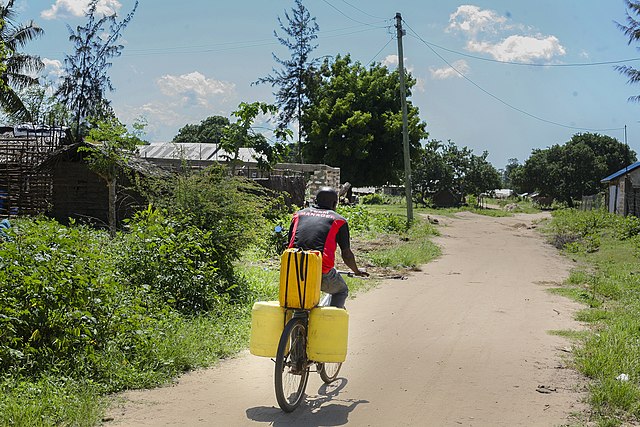Water supply and sanitation in Ethiopia
Access to water supply and sanitation in Ethiopia is amongst the lowest in Sub-Saharan Africa and the entire world. While access has increased substantially with funding from foreign aid, much still remains to be done. Some factors inhibiting the achievement of these goals are the limited capacity of water bureaus in the country's nine regions, two city administrations and water desks in the 770 districts of Ethiopia (woredas); insufficient cost recovery for proper operation and maintenance; and different policies and procedures used by various donors, notwithstanding the Paris Declaration on Aid Effectiveness.
The major river in Ethiopia is the Blue Nile. However, most drinking water in Ethiopia comes from ground water, not rivers.
Proportion of respondents by Kebele (sub-city) in Wukro indicating months in which water shortages restrict their activities (in 2019).
Percentage of households in Wukro using a variety of drinking water sources reported used in the last two weeks.
A public toilet at the Adama University (Nazret). This toilet uses the urine diversion technology that allows urine and feces to be collected separately as fertilizer.
Water supply and sanitation in sub-Saharan Africa
Although access to water supply and sanitation in sub-Saharan Africa has been steadily improving over the last two decades, the region still lags behind all other developing regions. Access to improved water supply had increased from 49% in 1990 to 68% in 2015, while access to improved sanitation had only risen from 28% to 31% in that same period. Sub-Saharan Africa did not meet the Millennium Development Goals of halving the share of the population without access to safe drinking water and sanitation between 1990 and 2015. There still exists large disparities among sub-Saharan African countries, and between the urban and rural areas.
In many countries in Africa, jerry cans which are used to transport and store water are a good option for safe storage
Communal tap (standpost) for drinking water in Soweto, Johannesburg, South Africa. May 2005
Urban and rural piped water coverage in Africa and Asia in 2015: Access to piped water in rural areas of Africa is consistently lower than in urban areas of Africa.
Example for drinking water quality issues in Kenya and Ethiopia: Stacked bar chart of the number of publications reporting data for each water quality parameter, with publications grouped as reporting no water points exceeding guideline threshold or reporting at least one water point exceeding threshold. The chosen thresholds are from the country's standards or WHO health guideline or East Africa Standard (EAS) for natural potable water.








